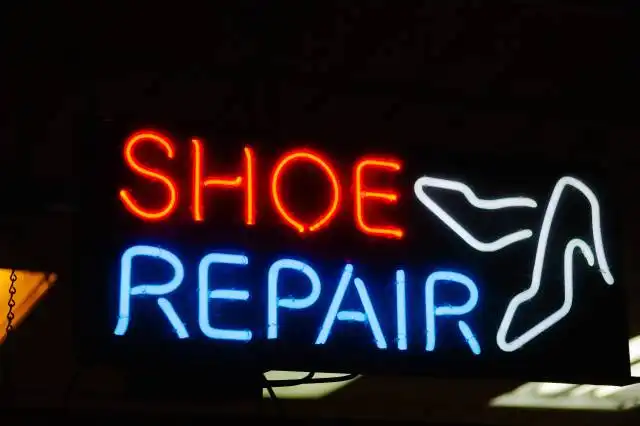Start a Consignment Store
Exploring the Exciting World of Consignment Stores: Sailing towards Sustainable Profits
| Updated


CONSIGNMENT STORE
A consignment store is a retail enterprise with a twist! It's a thrilling treasure hunt where items change frequently and every visit feels like a new adventure. As a consignment store owner, your business will involve selling second-hand goods that are often of high quality but at a fraction of the original cost. Essentially, it's a ship sailing on the sea of sustainability where you partner with sellers to breathe new life into pre-loved goods and share the profit from their sale.
Jump to Business Plan
RELATED BUSINESS IDEAS
Browse ALL Clothing & Fashion Trends Business Ideas
Discover Your Perfect Domain
Unlock the door to your online success with our hand-picked selection of premium domain names. Whether you're starting a new venture or rebranding an existing one, the right domain can set the tone for your digital presence. Browse through our curated list, each with its unique potential to enhance your brand's visibility and credibility.
CONSIGNMENT STORE MINI BUSINESS PLAN
This a quick reality check to help you identify the strengths and weaknesses of your business concept before you dive in.
Business Idea: Consignment Store
Expected Percent Margin:
- Gross Margin: 50-60%
- Net Profit Margin: 10-20%
Earnings Expectations:
- Daily Earnings: $150 - $400
- Weekly Earnings: $1,050 - $2,800
- Monthly Earnings: $4,500 - $12,000
- Annual Earnings: $54,000 - $144,000
Actions to Hit Those Numbers:
Inventory Management:
- Initial Investment: At least $10,000-$30,000 for interior setup and computer systems.
- Consignment Acquisitions: Develop relationships with at least 20-40 regular consignors.
Marketing and Customer Acquisition:
- Social Media: Post 2-3 times a week showcasing new items and specials.
- Local Advertising: Budget at least $400 a month for newspaper ads and community magazines.
Sales and Customer Experience:
- Staffing: Employ 1-2 staff members experienced in retail sales.
- Customer Service: Emphasize friendly, personalized service to encourage repeat business.
Cost Control:
- Rent: Choose a location where rent is less than 10% of expected monthly sales.
- Utilities and Maintenance: Budget around $200-$500 per month.
Business Operations:
- Open Hours: Open at least 6 days a week, 8-10 hours a day.
- Transaction Volume: Aim for 15-30 transactions per day at an average sale price of $20-$40.
These are approximations and can vary greatly depending on the specific inventory, location, local market conditions, and the entrepreneur's individual business tactics. Always consult with a business advisor for personalized advice.
NOT WHAT YOU HAD IN MIND? Here are more ideas



Browse ALL Clothing & Fashion Trends Business Ideas
Grab Your Business Website Name
Before you get caught up in the whirlwind of setting up your business, invest in a domain name. It's a small but significant step that lays the foundation for your brand and makes it easier for customers to find and trust you. Just like you wouldn't build a house without securing the land first, don't build a business without securing your domain name.
"Why? Can't that wait?" Here's why it shouldn't
Step 1: Determine if a consignment store is the right endeavor
Starting a consignment store can be a great way to make money, but it is important to make sure that it is the right business endeavor for you. Before you begin, you need to take a look at the startup costs and ongoing expenses associated with running a consignment store. This includes the cost of rent, labor, inventory, and other overhead costs. You should also consider the potential income you can make from selling consigned items. Research the local market to determine what types of items are popular and what prices you can expect to charge.
Breakdown of startup costs
When starting a consignment store, you will need to consider the costs associated with setting up the business. This includes the cost of rent, labor, inventory, and other overhead costs. You will also need to factor in the cost of marketing, advertising, and other promotional activities. Additionally, you will need to consider the cost of any necessary equipment such as computers, cash registers, and display cases.
Breakdown of ongoing expenses
Once the consignment store is up and running, there will be ongoing expenses associated with running the business. This includes the cost of rent, labor, inventory, and other overhead costs. You will also need to consider the cost of marketing, advertising, and other promotional activities. Additionally, you will need to factor in the cost of any necessary equipment such as computers, cash registers, and display cases.
Examples of ways to make money
When running a consignment store, there are several ways to make money. You can charge a commission on each item sold, or you can charge a flat fee for each item. Additionally, you can offer discounts for bulk purchases or for items that have been in the store for a long period of time. You can also offer special promotions and discounts to attract more customers. Finally, you can sell items directly to customers or offer consignment services to other businesses.
Step 2: Name the business
When naming a business, it is important to pick a name that is memorable and easy to spell. It should also be unique and not too similar to other businesses in the area. Additionally, it should be relevant to the type of business being started. For example, if the business is a consignment store, the name should reflect that. It could include words like “resale”, “consignment”, “thrift”, or “vintage”. It is also important to make sure the name is not already trademarked or copyrighted. This can be done by searching the US Patent and Trademark Office website. Additionally, it is important to make sure the domain name is available for the business website.
Register the business name
Once the business name is chosen, it is important to register it with the state. This will allow the business to use the name and protect it from being used by another business. This can be done through the Secretary of State’s office. Additionally, it is important to register the business with the Internal Revenue Service (IRS). This will allow the business to receive a tax identification number and file taxes. It is also important to register the business with the local government. This will allow the business to receive a business license and comply with local laws.
Create a logo
Creating a logo is an important step in branding the business. The logo should be simple and memorable. It should also be relevant to the type of business being started. Additionally, it should be able to be used on all types of marketing materials, including business cards, websites, and social media. It is important to make sure the logo is not already trademarked or copyrighted. This can be done by searching the US Patent and Trademark Office website. Additionally, it is important to make sure the logo is not too similar to other businesses in the area.
Step 3: Obtain necessary licenses and permits
Step 3: Obtain necessary licenses and permits is an important step in starting a consignment store. Before beginning the process of obtaining the necessary licenses and permits, it is important to research local and state regulations to ensure that the business is compliant. Depending on the state, there may be different types of licenses and permits required for a consignment store. For example, a business license, a sales tax permit, and a zoning permit may all be required. Additionally, it is important to research any special regulations that may apply to consignment stores, such as regulations regarding the storage and sale of second-hand goods.
Once the necessary research has been completed, the next step is to obtain the necessary licenses and permits. This process can be done online or in person, depending on the state. It is important to note that the process of obtaining the necessary licenses and permits can take some time, so it is important to plan ahead and start the process as soon as possible. Additionally, it is important to keep all of the necessary paperwork and documentation in a safe place, as it may be needed for future reference.
Step 4: Find a location
Considerations for finding a location
When deciding on a location for your consignment store, it is important to consider the size of the store, the visibility of the store, the cost of the location, and the local competition. The size of the store should be large enough to accommodate the merchandise you plan to carry, as well as any customers that may come in. Visibility is also important, as you want your store to be easily seen by potential customers. Cost is also a factor, as you want to make sure you are getting the best deal for your money. Lastly, you should consider the local competition, as you want to make sure you are not competing with other consignment stores in the area.
Tips on how to secure the location
Once you have identified a potential location, you should contact the landlord or owner to secure the space. Make sure to negotiate the best deal possible, and be aware of any additional costs such as insurance, taxes, and utilities. Additionally, you should research any zoning laws or regulations that may affect your business. Finally, you should make sure to get a written lease agreement that outlines the terms of the rental agreement. This will help protect both you and the landlord in the event of any disputes.
Step 5: Develop a business plan
Outline of the Business Plan
A business plan should include a detailed description of the business, its goals, and how it will be managed. It should also include a market analysis, a competitive analysis, a budget, and a financial plan. Additionally, it should include a marketing plan, a customer service plan, and a plan for hiring and training employees.
Tips on How to Develop a Business Plan
When developing a business plan, it is important to be as detailed as possible. This includes researching the local market, understanding the competition, and creating a budget. Additionally, it is important to create a plan for marketing, customer service, and employee training. It is also important to include a timeline for the business plan, as well as a plan for measuring success. Finally, it is important to review the business plan regularly to ensure that it is up to date.
Step 6: Set up the store
Setting up a consignment store can be a daunting task, but with the right guidance, it can be done quickly and easily. Before setting up the store, it is important to decide on the type of store you want to open. Do you want to open a brick and mortar store, an online store, or a combination of both? Once you have decided on the type of store you want to open, you will need to decide on the location of the store. Consider factors such as foot traffic, parking, and accessibility when choosing a location.
Once you have chosen a location, you will need to begin the process of setting up the store. This includes purchasing furniture and fixtures, stocking the store with merchandise, and setting up a point of sale system. You should also consider setting up a website for your store, as this will help to attract customers and increase sales. Additionally, you should consider setting up a social media presence for your store, as this will help to spread the word about your store and build a loyal customer base.
Finally, you should consider setting up a system for tracking inventory and sales. This will help you to keep track of the items in your store and ensure that you are able to meet customer demand. Additionally, it will help you to keep track of your profits and losses, allowing you to make informed decisions about the future of your business.
Step 7: Market the business
Marketing the business is essential to ensure that potential customers know about the consignment store. There are a variety of ways to market the business, including online and offline methods. Online methods include creating a website, using social media, and optimizing for search engines. Offline methods include distributing flyers, hosting events, and advertising in local publications. It is important to create a marketing plan that outlines the goals, budget, and timeline for the marketing efforts. Additionally, it is important to track the results of the marketing efforts to ensure that the business is reaching its target audience.
Examples of marketing materials
When marketing the consignment store, it is important to create materials that will capture the attention of potential customers. Examples of marketing materials include business cards, flyers, brochures, and postcards. Additionally, it is important to create a logo and slogan that will be used on all marketing materials. It is also important to create a website that is easy to navigate and includes information about the store, such as the types of items accepted, store hours, and contact information. Additionally, it is important to create social media accounts and post regularly to engage with potential customers.
Step 8: Hire employees
When it comes to hiring employees, it is important to find the right people who are passionate about the consignment store and have the right skills to help the store succeed. It is important to create a job description that outlines the duties and responsibilities of the job, as well as the qualifications and experience needed. Additionally, it is important to create a fair and competitive compensation package that will attract the best candidates. When conducting interviews, it is important to ask questions that will help you determine if the candidate is the right fit for the job. Additionally, it is important to check references and conduct background checks to ensure that the candidate is qualified and trustworthy.
Training employees
Once the right employees have been hired, it is important to provide them with the necessary training to ensure that they are able to perform their duties effectively. This includes providing them with an overview of the consignment store, the policies and procedures, and the expectations of the job. Additionally, it is important to provide them with the necessary tools and resources to help them succeed in their roles. This could include providing them with access to software and technology, as well as providing them with the necessary training to use the tools and resources. Additionally, it is important to provide them with ongoing training and support to ensure that they are able to stay up-to-date with the latest trends and developments in the consignment store industry.
Step 9: Track inventory and sales
Tracking inventory and sales is a crucial step in running a successful consignment store. It is important to keep accurate records of what items are coming in, what items are being sold, and what items are still in the store. This will help you to know what items are popular and what items need to be discounted or removed from the store. To track inventory and sales, you can use a spreadsheet, an inventory management system, or a point-of-sale system.
Spreadsheets are a great way to keep track of inventory and sales. You can use a spreadsheet to track the items that come in, the items that are sold, and the items that are still in the store. You can also use the spreadsheet to track the prices of the items and the amount of money that was made from each sale.
Inventory management systems are a great way to keep track of inventory and sales. These systems allow you to track the items that come in, the items that are sold, and the items that are still in the store. They also allow you to track the prices of the items and the amount of money that was made from each sale.
Point-of-sale systems are another great way to track inventory and sales. These systems allow you to track the items that come in, the items that are sold, and the items that are still in the store. They also allow you to track the prices of the items and the amount of money that was made from each sale.
No matter which system you choose, it is important to keep accurate records of your inventory and sales. This will help you to know what items are popular and what items need to be discounted or removed from the store. Keeping accurate records will also help you to make sure that you are making a profit and that you are staying within your budget.
EXPLORE MORE CATEGORIES
Browse ALL Business Idea Categories
TAKE THE NEXT STEPS









